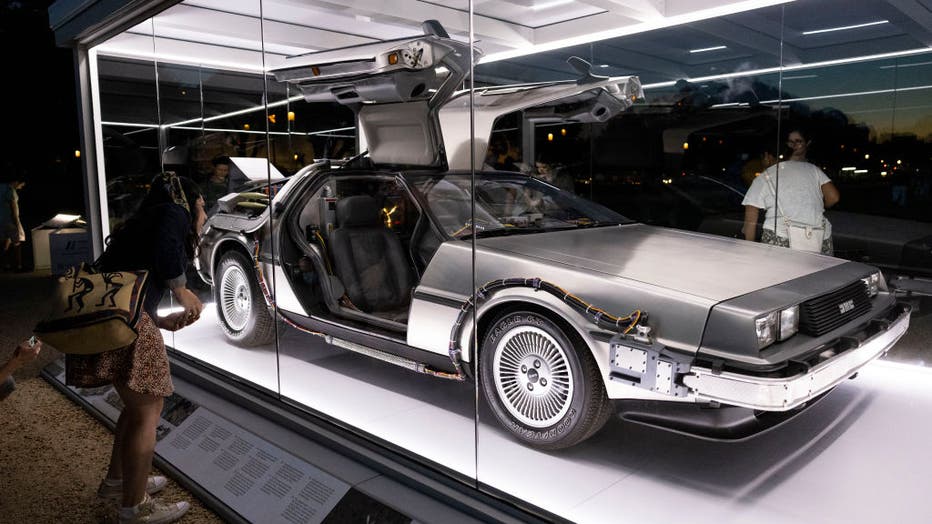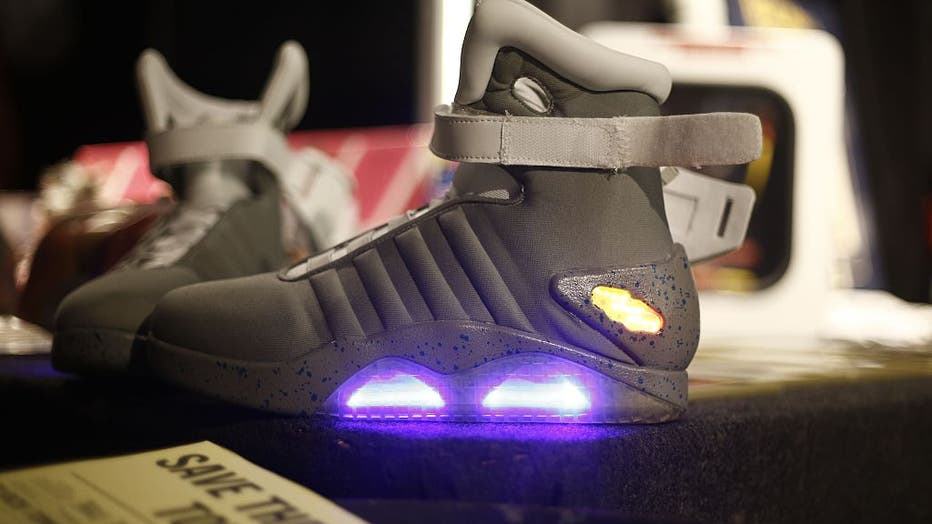39 years later: Which 'Back to the Future' tech predictions came true?
Credit: Universal
It has now been nine years since the date Doc and Marty traveled to the future in Back to the Future Part II.
In the 1989 film, the characters jump to October 21, 2015, encountering all kinds of futuristic technology compared to their original 1985 timeline.
Although many of the film’s predictions hadn’t materialized by 2015, several have come to life in 2024.

Credit: Universal
Here's a look at how Back to the Future's visions of the future compare to today’s technology:
1. TV Video Calls
In 1989, the idea of video chatting on a TV seemed far-fetched. Now, it’s used daily.
More than 80% of workers rely on video calls for their jobs, according to a TechRepublic study.
Platforms like Zoom, Microsoft Teams, and FaceTime have made video calls a standard part of life—far beyond what the movie’s creators could have imagined.
2. Smart Glasses
In the movie, people wore smart glasses for video calls and watching TV.
Today, virtual reality headsets and smart glasses are common… Apple recently released Vision Pro glasses that offer similar functions, including watching TV and video calls.
The resemblance between these glasses and the film’s version is impressive considering the 30-year gap.
3. Flying Cars

WASHINGTON, DC - SEPTEMBER 04: The 1981 DeLorean DMC-12 from the "Back to the Future" movie series is displayed on the National Mall on September 04, 2021 in Washington, DC. The display is part of the annual Cars at the Capitol exhibit that celebrate
Flying cars are still a dream. Experts believe they won’t be a reality anytime soon, though drone technology capable of transporting people is being explored, according to a study at Virginia Tech.
However, self-driving cars have advanced significantly since 2015, bringing us a step closer to the future depicted in the film.
4. Fingerprint Recognition
While fingerprint recognition was futuristic in the film, it has become outdated in handheld technology by 2024. Apple’s Touch ID debuted in 2013, and by 2017, Face ID became the new standard.
However, some homes today use fingerprint recognition for entry, as seen in the film.
Additionally, some smart locks and devices allow entry through codes, smartphones, or even implanted chips, which could be considered a distant relative to fingerprint recognition.
5. Dog-Walking Drone
While we don’t have drones walking dogs yet, drones are widely used for various tasks, including filming and delivering food and packages.
Though walking the dog is still done the old-fashioned way, drone technology continues to evolve.
6. Tablets
Characters in Back to the Future Part II used tablets, which have become a staple in today’s tech world.
Many modern laptops double as tablets, and tablets are now integrated into cars and airplanes.
On average, people spend over seven hours a day on their tablets or smartphones, according to Comparitech.
7. Self-Lacing Shoes

Miniature toys are displayed during a celebration event of the 30th anniversary of the movie "Back to the Future" in Sao Paulo, Brazil on October 17, 2015. AFP PHOTO / Miguel SCHINCARIOL (Photo credit should read Miguel Schincariol/AFP via Getty Imag
Sadly, self-lacing shoes have not become a reality, though they would certainly make life easier.
While we don’t have self-lacing technology, many shoes today are slip-ons or designed without laces. Untied shoes have even become a fashion trend.
Nike released a special edition Back to the Future sneaker shoe back in 2016, though they do not tie themselves. These shoes resell for $18,000-$200,000.
Doc and Marty may have been shocked that self-tying shoes have not yet been invented—and the fact that Birkenstocks made a major comeback.
8. Food Hydrator
In the film, small food items were placed in a hydrator and came out fully cooked.
Although we don’t have such technology, air fryers come close by making meals quickly. Today’s kitchen gadgets, including smart ovens, have revolutionized cooking, though they aren’t quite as futuristic as Marty’s hydrator.
9. Hoverboards
Hoverboards, as envisioned in the movie, still don’t exist. The 2015 hoverboard craze featured two-wheeled electric devices that didn’t hover at all.
While fun, they weren’t remotely close to the levitating hoverboards from Back to the Future.
10. Auto-Drying Clothes

Picture of a replica of the jacket that actor Michael J. Fox used in the movie "Back to the Future'' in 1985, being displayed during an anniversary event at the Fashion Museum in Santiago on October 21, 2015 -- the exact date in the future that Fox's
In the film, Marty McFly wears a jacket that automatically dries and adjusts to fit its wearer.
While we don’t have anything quite like that in 2024, advancements like AI-powered body measurement tools are a step in that direction.
Still, Marty would likely be impressed with the resurgence of 1980s fashion in today’s trends.

